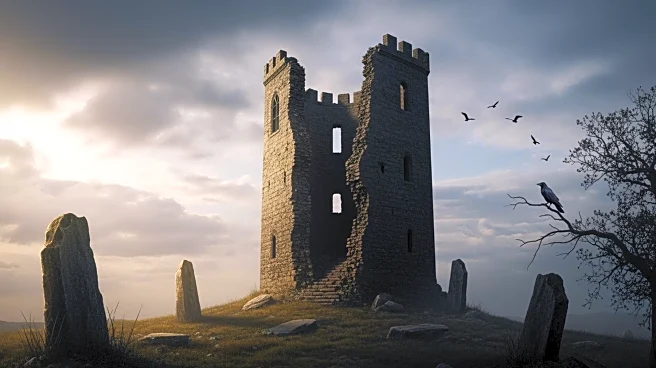What's Happening?
A medieval Italian tower, the Torre dei Conti, partially collapsed while undergoing renovations in Rome, resulting in the death of a worker. The incident occurred less than a mile from the Colosseum, and
emergency responders worked for hours to rescue the trapped individual. The worker, identified as Octav Stroici, a Romanian national, was pulled alive from the rubble but later died in the hospital. Another Romanian national was injured in the collapse. The tower, over 800 years old, had been closed to the public since 2007 and was undergoing a $7.9 million renovation funded by the European Union. Authorities are investigating the cause of the collapse, with initial reports suggesting an internal structural failure.
Why It's Important?
The collapse of the Torre dei Conti highlights the challenges and risks associated with renovating historic structures. This incident raises concerns about the safety protocols and structural integrity assessments in place for such projects. The death of a worker underscores the human cost of these failures and may prompt stricter regulations and oversight in future restoration efforts. The investigation could lead to changes in how renovations are conducted on ancient buildings, impacting the preservation of cultural heritage sites across Italy and potentially influencing similar projects worldwide.
What's Next?
Italian prosecutors have opened an investigation into the collapse, which may lead to legal actions or policy changes regarding the renovation of historic buildings. The findings could affect future restoration projects, potentially leading to increased safety measures and funding requirements. The incident may also prompt discussions among European Union stakeholders about the allocation and oversight of funds for cultural heritage preservation. The outcome of the investigation will be closely watched by conservationists, architects, and policymakers involved in the restoration of historic sites.
Beyond the Headlines
The collapse of the Torre dei Conti may have broader implications for the preservation of cultural heritage. It highlights the delicate balance between maintaining historical authenticity and ensuring modern safety standards. The incident could spark debates about the ethical responsibilities of preserving ancient structures while protecting the lives of those working on them. Additionally, it may influence public perception and support for funding such projects, potentially affecting future investments in cultural heritage preservation.

